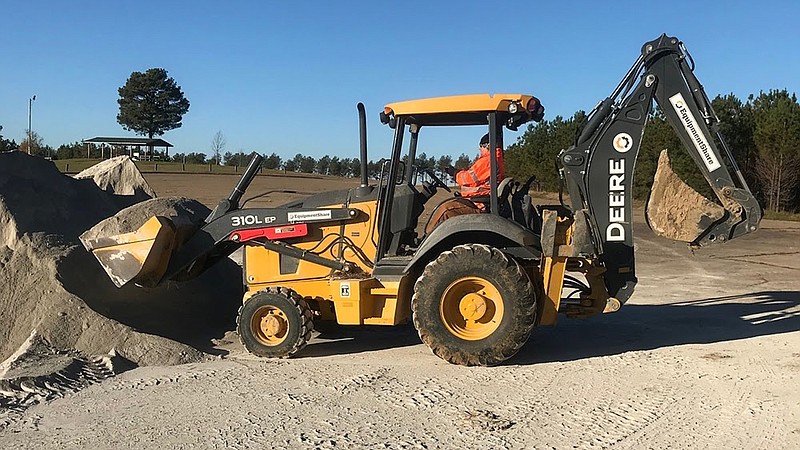Until a recent spate of rain and even some snowfall, the lake bed and shoreline of Lake Monticello was being prepared for the day when the lake can refill and become a leading Arkansas fishery again.
"It's too wet to get out right now to do a whole lot," Kris Nault said recently, a day after Monticello had a winter wonderland look.
Nault is the Arkansas Game and Fish Commission district supervisor overseeing Lake Monticello.
Lake Monticello, which was among the state's best bass lakes well into the 2000s, is owned by the City of Monticello, while the Game and Fish Commission manages the fishery. When the lake's dam showed signs of damage severe enough that it could potentially fail during the summer of 2019, the City of Monticello decided to completely drain the lake in order to repair the dam.
This allowed the Game and Fish Commission the opportunity to conduct habitat work on the lake and apply rotenone to standing water in order to eliminate undesirable fish species, such as yellow bass and grass carp.
The lake was completely drained by October of 2019, and habitat work began in earnest in July when the lake bed was dry enough for heavy machinery.
"We had 15 fisheries employees from around the state get together for a week to conduct habitat work on the lake," Nault said.
During that time, a total of 41 brushpiles, 117 double and triple pallet structures, and 32 porcupine fish cribs were constructed. The dried lake bed allowed tractors to drag trees that were cut along the shoreline out to areas located in 10 to 20 feet of water to create large brushpiles.
After that project, a bulldozer was used to create roads to 18 ponds located in the lake bed so rotenone could be applied to the ponds to remove undesirable fish. Rotenone was applied from jon boats trailered to the ponds by utility terrain vehicles. Also, more than 1,500 tons of lime were spread throughout the lake bed using backhoes.
Lime is added to lake beds to reduce acidity of bottom soils, allowing nutrients to become more readily available. Also, the liming of the bottom allows regular lake fertilization to be more effective – reduced acidity coupled with fertilization can increase a lake's productivity, he said.
Hinge-cutting of shoreline trees, a method where trees are cut at the base and left in place in order to create shallow water cover, was conducted this fall. A total of 121 trees were cut along 2.3 miles of shoreline between Hunger Run Access and Bikini Beach.
"We plan on hinge-cutting trees along the remaining shoreline once the lake bed dries out more. If we cut trees at the same rate as we did between Hunger Run and Bikini Beach, we will have cut between 800 and 900 trees, which will significantly improve the amount of shallow water cover on Lake Monticello," Nault said.
Also, he said that last month, "We created 120 single and 60 double pallet structures using 720 pallets. These structures were placed at 12 sites along the shorelines of farm ponds and culvert/bridge crossings in the lake bed. These sites were chosen to create a 'spot on a spot,' meaning we placed cover next to already good structural locations in order to attract and concentrate more fish."
Along with pallets and more hinge-cutting, Nault said there are plans for using Georgia Cube structures to boost habitat possibilities for the fish. A Georgia Cube is made out of PVC pipe with corrugated drain piping wrapped around the structure for an effective artificial habitat structure.
"It's still up in the air how many of those we will have, but we're getting plans together to start building them," Nault said.
The next round of work can't start until conditions dry up, though, which means that the Monticello-based district work in recent weeks has turned attention to other pressing projects that need completing, Nault said.
"Right now, with how wet it got with the rain and snow, we're getting stuck with ATVs and having four-wheelers come in to pull us out," Nault said. "The lake bed already was soft before this. That's just what you deal with in building habitat on top of a drained lake bed. If the lake bed dries out enough that we can get tractors out on the lake again without them constantly getting stuck, we will create more brushpiles as well."
Meanwhile, construction of the dam to retain the water at Lake Monticello is in the hands of the city and Mayor Paige Chase. The city has accepted a bid from Marsau Enterprises of Oklahoma and they've had their preconstruction meeting. Marsua Enterprises is scheduled to start preliminary testing and staging equipment this month.
Jim Harris is managing editor of Arkansas Wildlife Magazine.
